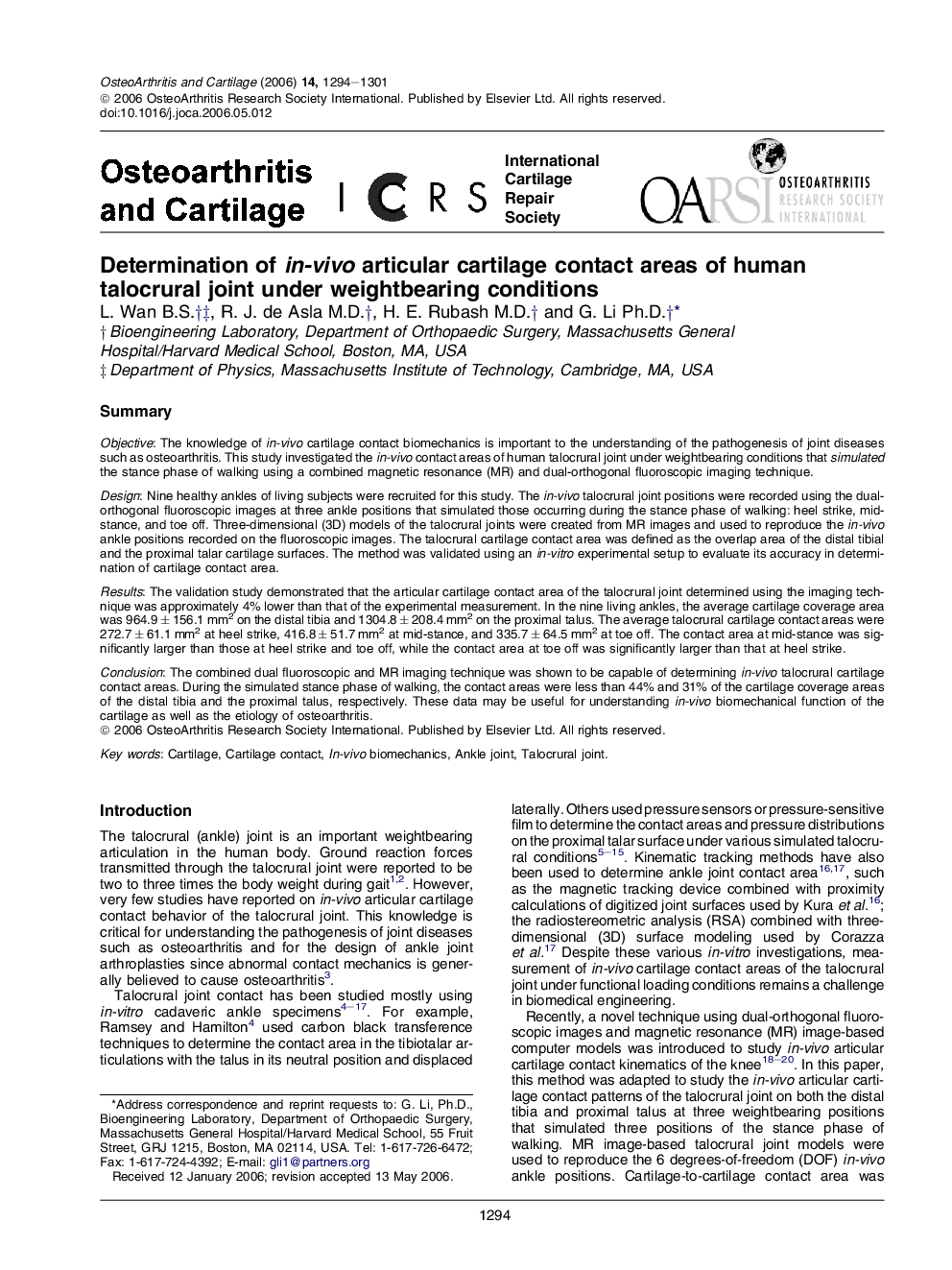| Article ID | Journal | Published Year | Pages | File Type |
|---|---|---|---|---|
| 3381993 | Osteoarthritis and Cartilage | 2006 | 8 Pages |
SummaryObjectiveThe knowledge of in-vivo cartilage contact biomechanics is important to the understanding of the pathogenesis of joint diseases such as osteoarthritis. This study investigated the in-vivo contact areas of human talocrural joint under weightbearing conditions that simulated the stance phase of walking using a combined magnetic resonance (MR) and dual-orthogonal fluoroscopic imaging technique.DesignNine healthy ankles of living subjects were recruited for this study. The in-vivo talocrural joint positions were recorded using the dual-orthogonal fluoroscopic images at three ankle positions that simulated those occurring during the stance phase of walking: heel strike, mid-stance, and toe off. Three-dimensional (3D) models of the talocrural joints were created from MR images and used to reproduce the in-vivo ankle positions recorded on the fluoroscopic images. The talocrural cartilage contact area was defined as the overlap area of the distal tibial and the proximal talar cartilage surfaces. The method was validated using an in-vitro experimental setup to evaluate its accuracy in determination of cartilage contact area.ResultsThe validation study demonstrated that the articular cartilage contact area of the talocrural joint determined using the imaging technique was approximately 4% lower than that of the experimental measurement. In the nine living ankles, the average cartilage coverage area was 964.9 ± 156.1 mm2 on the distal tibia and 1304.8 ± 208.4 mm2 on the proximal talus. The average talocrural cartilage contact areas were 272.7 ± 61.1 mm2 at heel strike, 416.8 ± 51.7 mm2 at mid-stance, and 335.7 ± 64.5 mm2 at toe off. The contact area at mid-stance was significantly larger than those at heel strike and toe off, while the contact area at toe off was significantly larger than that at heel strike.ConclusionThe combined dual fluoroscopic and MR imaging technique was shown to be capable of determining in-vivo talocrural cartilage contact areas. During the simulated stance phase of walking, the contact areas were less than 44% and 31% of the cartilage coverage areas of the distal tibia and the proximal talus, respectively. These data may be useful for understanding in-vivo biomechanical function of the cartilage as well as the etiology of osteoarthritis.
